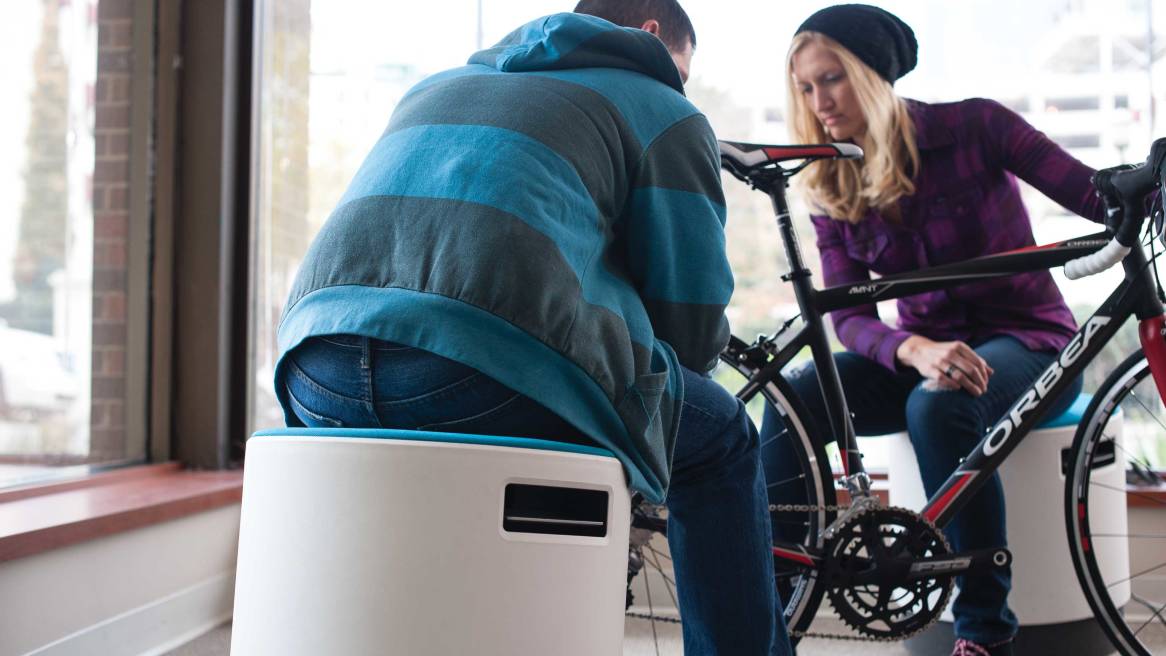Enhancing Company Culture at Orbea
Culture, the reigning champ of hip offices everywhere, promises to fuel employee positivity, productivity and loyalty in small businesses—but do we have proof it actually delivers results? We do now.
It’s splashed across media as the secret sauce for injecting workplaces with fun and vitality. Culture, the reigning champ of hip offices everywhere, promises to fuel employee positivity, productivity and loyalty in small businesses — but do we have proof it actually delivers results? We do now.
To gain insights around workplace culture and its connection to space, turnstone recently conducted a survey with 515 companies employing no more than 100 people each. Specific to culture in the workplace, the survey revealed that nearly 90 percent of small business owners or managers identify culture as foundational to the success of their companies. Furthermore, a whopping 80 percent of those surveyed, regardless of company size or industry, believe their physical environment plays a role in fostering vibrant culture.
So what is it about culture that has professionals across industries consistently cheering? And why are we hearing so much about it now?
The shift toward culture may be gaining prominence as small businesses struggle to compete for talent with larger counterparts in the areas of plump paychecks and generous benefits packages. They’re beginning to recognize culture for the trump card it is, particularly with Millenials used to interactive, stimulating environments. But more telling, small businesses realize that space plays an undeniable role in the development of that culture. Without workplaces intentionally designed to support socializing, healthy collaboration and having fun, culture will wither beneath the weight of an underperforming office environment.
Jason Macom, operations manager of Orbea, a Spanish bicycle company with offices in the United States, knows firsthand the impact that culture has had on his team. Not only has it promoted the brand internally, allowing for people to marinate in the company ethos, it’s propelled genuine relationships around a passion for cycling.
“Our culture helps us approach our work more passionately, because the entire cycling community is passionate about the sport,” says Macom. “We bike to work, we offer showers so people can transition back to their desks comfortably and we allow people to fit training schedules into their workday. If our workplace culture didn’t support our dedication to bicycles or the cycling lifestyle, there’d be a lot of turnover, which in the long run would affect our bottom line.”
Sentiments like this represent what many small business owners have known to be true, though few had numbers to back it up—until now. Turnstone’s Small Business Culture Report reveals that half of survey participants say employee passion about who their company is and what they do is what makes their workplace special.
“Everything about Orbea is about bicycles,” notes Macom. “We are located inside a concepts store where everything is displayed and we’re surrounded by bikes. There is only one person on our team who is not a bike rider—it’s that important to who we are and what we do.”
The idea that workers can bring their passions into the office points to another turnstone survey finding: Respondents cited authenticity, the freedom to be oneself in the workplace, as second only to employee passion in importance to vibrant culture. Authenticity has also been identified by Steelcase research as one of six dimensions of wellbeing; it is critical to employee satisfaction and fostering a welcoming environment in the workplace.
Steelcase researcher Beatriz Arantes says that “even in Eastern cultures with their legacy of collectiveness versus individualism, the authenticity of self and being able to express that at work is becoming more important.”
In fact, when it comes to culture, 90 percent of those surveyed indicated that culture positively affects their company when it comes to helping employees be productive and creative, attracting and retaining customers and top talent, and growing the company to be more profitable.
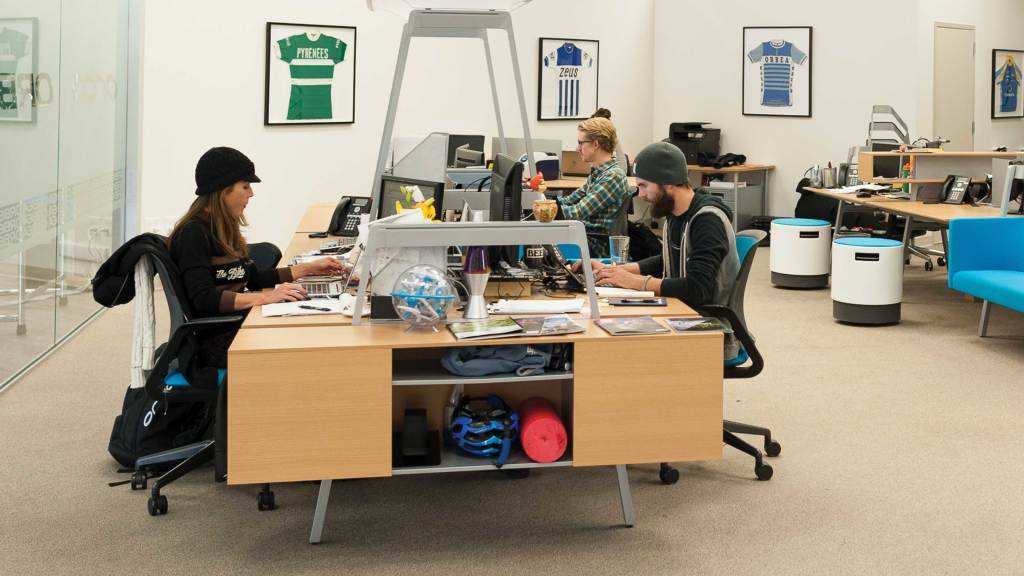

This kind of authentic, thriving office culture has been proven a valuable commodity, especially for companies without the means to pad paychecks or offer a laundry list of other benefits. Going beyond written job descriptions and perks sows benefits beyond cultivating fun in the office—it adds depth and meaning to work and offers new connection points for team members.
“We have a coffee bar in our bike shop where we gather around to watch big bike races like the Tour de France,” says Macom. “Just taking time away from work to catch the excitement builds camaraderie and adds that social component that makes us love coming to work. We also have group rides that leave from the bike shop, and our team members lead those rides. It’s a great way for us to integrate into the community and interact with local cyclists.”
But culture like this won’t happen without intentionally planning a space to support it. Leaders must give thought to the values they wish to reinforce, the perks they intend to offer and the ideals that form the personality of their brands. When employees see their leaders modeling these things and when the physical environment provides pathways for acting on those convictions, culture can begin to take root.
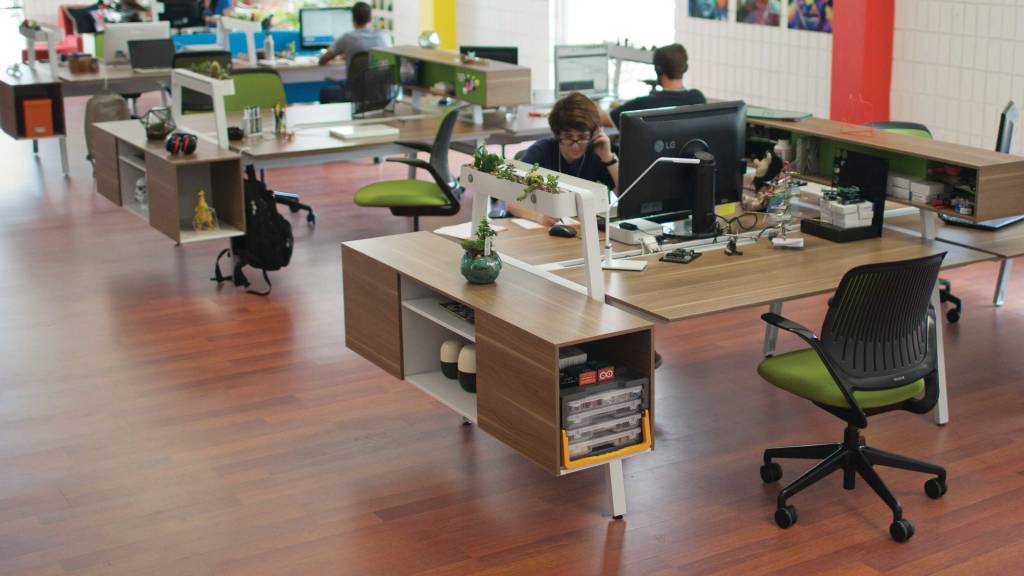
Fracture, a company specializing in printing photos on glass, has seen the impact space can have on the work environment. Alex Theodore, Fracture’s CTO and co-founder, identified this connection soon after opening the doors to their Florida startup. “The space is the context for everything. I mean, it may just be the place you go to do your job, but it’s your constant outside inspiration on all levels.”
“The space is the context for everything. It’s your constant outside inspiration on all levels.”
Alex TheodoreCo-founder, Fracture
Theodore is right. Turnstone’s survey reinforced the notion that physical environment plays an undeniable role in company culture. Having a space that promotes authenticity rather than stifling it, and that celebrates transparency rather than hiding behind closed doors, is the first step on a long journey toward a compelling culture.
Macom has also seen Orbea’s culture evolve positively with the completion of their new space, now just over a year old. He recalls their previous location as being very segregated with high-walled cubicles and long hallways that separated departments, keeping team members at a distance. There were a lot of barriers, he remembers, and, with a few strong personalities dominating the office, people simply stopped communicating; relationships were noticeably curbed.
That’s when they knew things needed to change. Orbea reimagined their space and reaped the benefits of a rejuvenated culture that rose up organically once the walls came down.
“Now with an open office, I’m seeing relationships grow,” says Macom. “You overhear conversations and learn; teams are collaborating instead of operating in silos. Now we know what’s happening. The new space has increased the communication on our team and that has played directly into our success with sales and logistics.”
Steelcase research shows that healthy relationships in the workplace contribute to people feeling a sense of belonging and purpose, which in turn translate into trust and increased collaboration.
Orbea intentionally crafts their culture around moments that allow those kinds of relationships to flourish. For example, when the weather is nice, the group bikes together to local restaurants for lunch. Not only does this afford them real opportunities to experience their products, but it gives them ways to interact authentically with others outside the office. These moments are powerful culture-builders.
While the team at Fracture doesn’t share a common lifestyle like cycling, they intentionally work to build community by incorporating play into their office culture and affirming the inclusion of pets in the workplace. Team members consider these as perks that boost wellbeing, grow relationships and allow for authenticity in the office. At just five years old, Fracture is a growing business that understands the connection between space and creativity, innovation and inspiration.
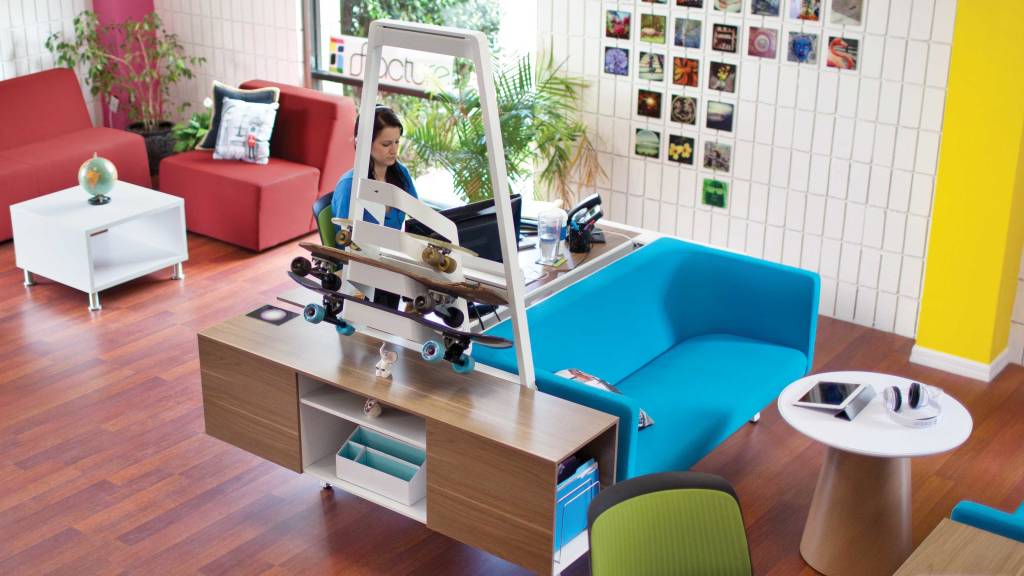

Unfortunately, companies like Orbea and Fracture are still hard to come by. Turnstone’s Small Business Culture Report shows that 72 percent of those surveyed are dissatisfied with their current company culture. This opens the door to low productivity, stunted creativity, a lack of a sense of belonging and overall employee negativity, all of which puts the unity and wellbeing of the team at risk.
Regardless of the size of your organization, you can take actionable measures to turn up the volume on culture and strengthen your team. Whether you’re an established company or a fledgling enterprise, small steps will quickly accumulate to make a big difference.
Turnstone Culture Survey
Turnstone recently conducted a survey with 515 companies employing no more than 100 people each.
| 47% | invite their team to bring outside passions into the workplace |
| 26% | say when it comes to social gathering places, their physical space needs improvement |
| 72% | are dissatisfied with their current company culture |
| 90% | identify culture as foundational to the success of their companies |
| 80% | believe their physical environment plays a role in fostering vibrant culture |
How to Turn Up the Volume on Culture
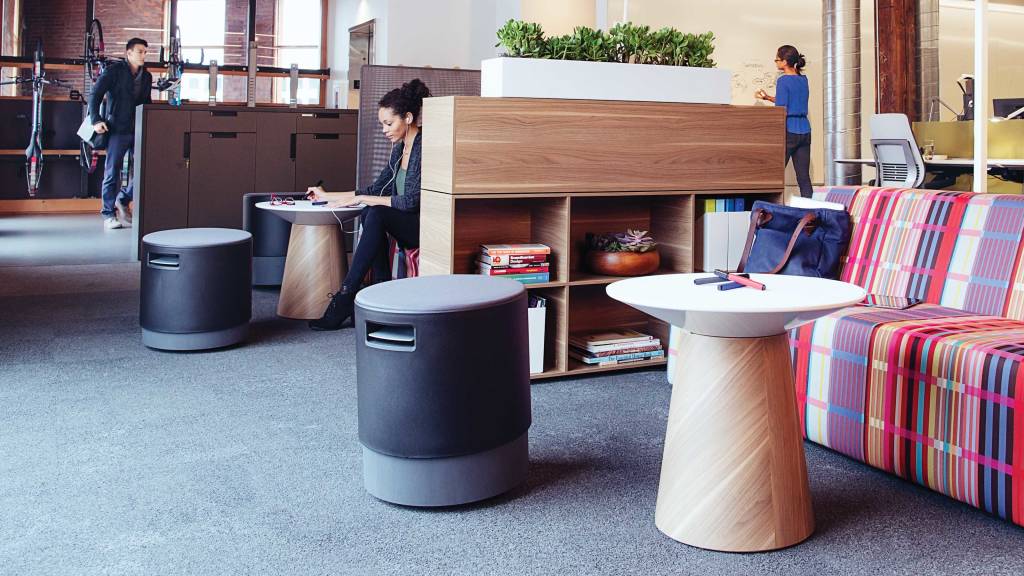
Be a flexibility champion.
While some larger companies have made headlines for requiring employees to return to the office, nearly half of small businesses still offer flexible work arrangements, including the option to telecommute, work part-time or work from home. Go the extra mile for your team by making these accommodations whenever possible. Your willingness to help them balance their busy lives will reap a harvest of dedicated, loyal employees.
Treat your people.
Roughly half of the companies surveyed offer paid time off and other amenities like complimentary snacks and meals. Show your people that rewards don’t always come as extra zeroes on a paycheck— they can be wrapped up in a day off, too. Finding new ways to show your appreciation for a job well done is critical to vibrant culture and happy employees.
Offer a palette of place.
The turnstone survey reports that less than one third of businesses offer employees a variety of workplace options. Planning your space to allow for standing desks, private areas, collaborative spaces and lounge settings gives employees choice and control—something that enhances wellbeing and that great culture always supports.
While designing for a range of spaces, remember to include areas for your team to socialize. Twenty-six percent of small businesses say that when it comes to social gathering places, their physical space needs improvement. Anchoring your space with a central table for celebrations and team lunches is a great first step.
Give wellbeing a thumbs-up.
Fewer than a quarter of survey respondents said they feel encouraged to walk away from their desks, change postures or explore other work areas during the day. Demonstrate your commitment to wellbeing by offering access to natural light and your nod of approval when team members schedule walking meetings. Furthermore, remember that authenticity is an important component of wellbeing. Join the 47 percent of small businesses that invite their teams to bring outside passions into the workplace.
Promote personal growth.
Forward-thinking companies spend time thinking about and intentionally fostering their employees’ career growth and development. Don’t be afraid to invest time to help them find answers to their questions and seek ways to continue learning. Communicate trust by empowering employees to make decisions about the processes and environments that affect their work lives.
Be about something bigger than your brand.
Finding opportunities to connect with your local community or to global causes endears your brand to both customers and employees. Identify the things that mean the most to your people and get creative about your involvement. You’ll feel the rewards on your bottom line, but you’ll see the rewards on the faces of your team. And that is where great culture begins.

